I am in the process of building a series of wooden handplanes. Due to the fact that I cannot buy timber in dimensions that would allow construction from a single piece, I have to follow the method of laminating made famous by James Krenov. Unfortunately, this necessitates a fairly functional bandsaw given the dimensions of these planes. My bandsaw is of a Chinese persuasion that few people peregrinating the so called western world (including myself) would have heard of before. I always though that was how a bandsaw should look like as I have never seen another until I started reading a bit more about woodwork.
Every expert these days seems to advocate for using the bandsaw in a way that the table saw used to be in years gone by. I first thought they were mad as my bandsaw could not even cut a smooth curve leave alone rip and re-saw and all these absurd new tasks they suggested should be done with it. Then I had a look at how these bandsaws looked like and realised that they were quite a bit different to mine. In the first place, the operators actually tuned the contraption before going to war with it. I did not even know that it could be tuned. I then watched a video by Michael Fortune on how to do this. It is on the Fine Woodworking website (member’s section if I remember correctly).
Anyway, this is all a bit besides the point. Point is, I spent a significant part of a week on rehabilitating my bandsaw, which included the process of building this jig that I call a “Bandsaw Mitre-sled”. I plan to write a post on the actual rehab process of the bandsaw in the near future.
The owner of a local tool shop by the name of Martin Mozny (Windhoek Tool Centre) gave me a whole heap of Festool equipment that was apparently used for demonstrations and therefore not in a condition to be sold as new. Despite this the stuff is in top order, especially for building jigs. While contemplating the design of this jig I consulted the container that house the orphan Festool bits and pieces. I considered both of the parts in the below pictures, but decided to rather use another.
Here you can see the the mitre gauge I decided on together with a piece of scrap plywood that would become the main parts of the jig.
Next I found some scrap pine and swarthout (not in the picture) to form the edges/aprons. A strip of Harde Peer left over from another job was shaped first on the table saw, then the thicknesser and finally handplaned to fit perfectly in the channel/dado in the bandsaw table.
Here you can see how I have set up a temporary fence to drill the holes for attaching the strip of Harde Peer and the Festool mitre gauge. The strip was then glued and screwed to the plywood.
In the pictures below you can see the profile of the aluminum arm of the mitre gauge. The bottom of the profile is fairly thick, which allowed me to drill 5 mm holes in order to cut thread for a 6 mm bolt.
Here you can see how I drilled the holes on the drill press …
… and cutting the thread.
The mitre gauge was then fixed to the plywood with three countersink bolts.
As you can see these bits of scrap pine has done duty in several other incarnations. The swarthout in the centre had less battle scars. I then processed these pieces to assume the same dimensions.
In the first picture below you can see how I removed a small area of the swarthout to accept the harde peer strip. I also used dividers to quickly mark out all the screw holes that needed to be drilled in the plywood to attach the sides/aprons.
After drilling the mentioned holes I clamped the sides and plywood into place as shown. In the third picture you can see how useful a cuff can be to restrict the depth of the pilot hole to exactly the length of the screw.
The next step was to tidy up the wooden parts of the jig. Yes, you are right I did remove the mitre gauge to make this a bit easier. You can also see how handy my “Proletarian Sanding” Contrivances are in these situations. You will find an entire post devoted to the building of these sanding planes, under the category Handtools.
The mitre gauge goes back and the jig is ready to cut the zero clearance curve …
… like so …
The first cut I made using this jig was a 51º bedding angle on a blank meant to become a small smoothing plane. It was made up of Beech with an Ysterhout sole. One unexpected advantage of this jig I discovered was that the zero clearance curve tells you exactly where the cut will be made. If for example you mark it out on the stock as I did on the plane blank, it becomes extremely easy to position the stock for a perfect cut …
… as shown in the pictures below.


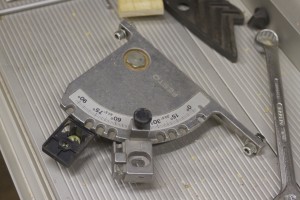


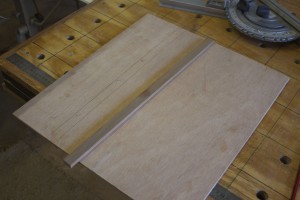
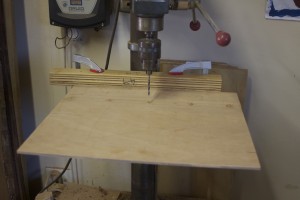
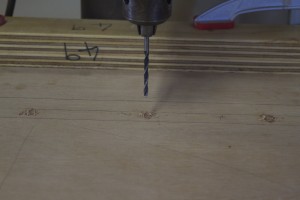
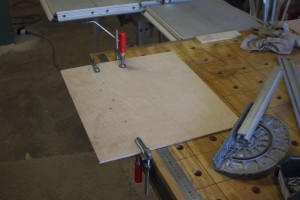


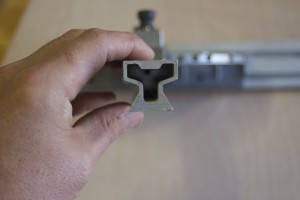
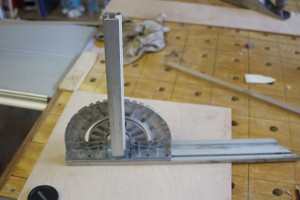


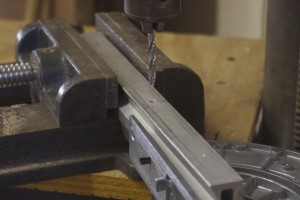

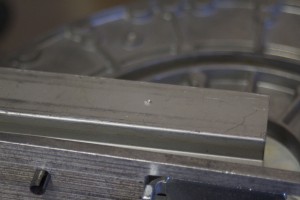
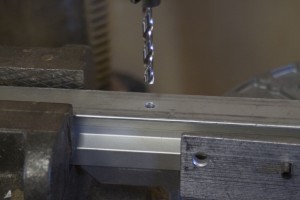
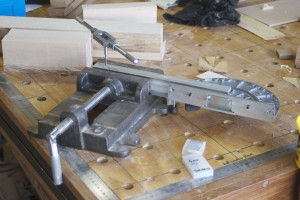
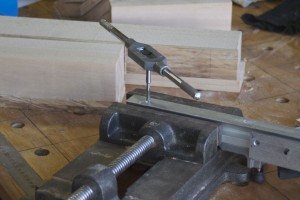

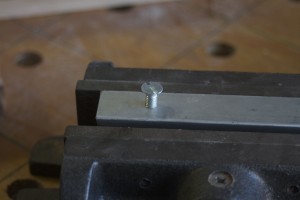
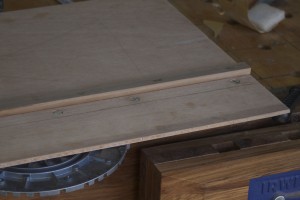
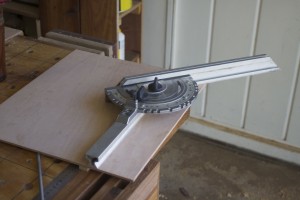


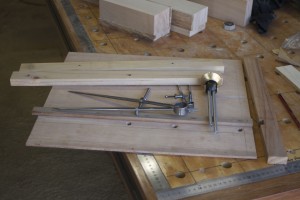
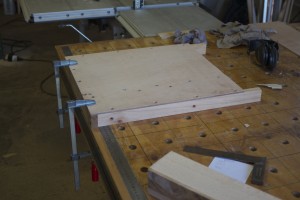
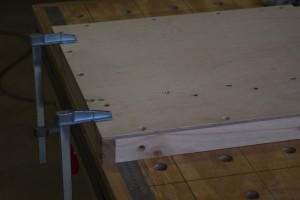

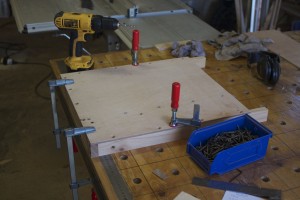
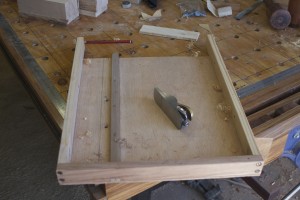
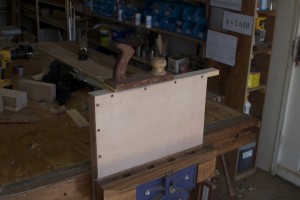
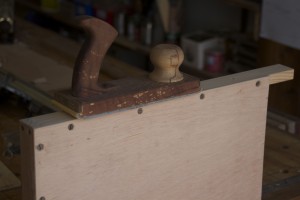
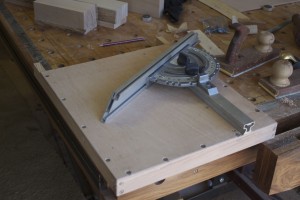
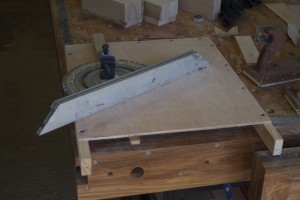

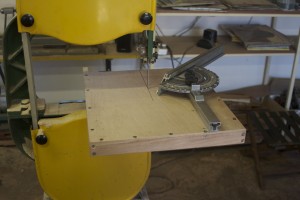
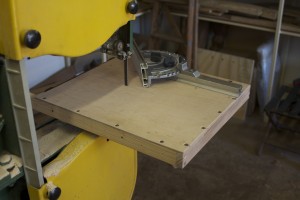
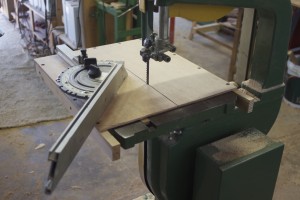
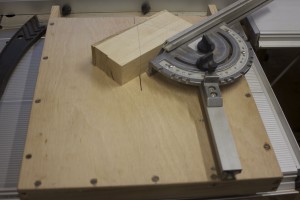


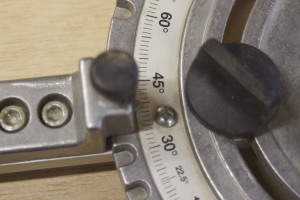

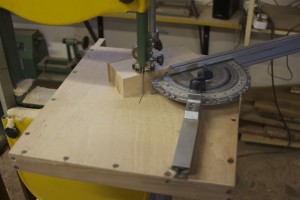
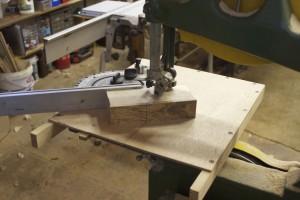
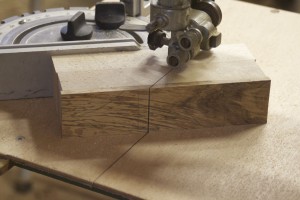
tripped over your website searching for Holtzapffel bench plans. have only opened two pages here and found your terrific post about sharpening.
I’ll be back.
Is it possible to follow? I don’t see that option.
Best regards,
Joe
Thanks Joe, I appreciate your comments. I am not too sure how to make that option available as my site design skills are limited, but will do some research. If you are planning to build an 18th century style bench, you might fine useful info in a series of posts (24 at present) I wrote while building mine. Just click on the category “Building my benches” and you will find hours of pictures and thoughts.
Cheers
Gerhard